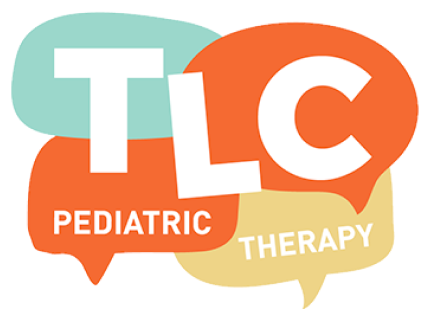Is your child a “picky eater?” Will she only eat from one particular plate in one special seat? Does he only want to eat foods that are orange? Or do you worry about his safety while eating because he is always gagging or throwing up?
Feeding Therapy

At TLC we understand how tough it can be to nourish your child when it doesn’t seem like he wants to eat anything. We recognize that mealtime is an important family occupation that brings family and friends together to socialize, bond and enjoy the textures and flavors of different foods. Understandably, it can be quite disheartening when your child appears to not want to participate in this co-occupation.
Fortunately, our specialized team of speech language pathologists and occupational therapists is here to help! Feeding Therapy focuses on evaluating a child’s nutritional needs, the underlying musculoskeletal anatomy, physiology and motor skills that may be contributing to difficulties, pain and/or discomfort with eating, and sensory challenges that may make the experience of eating stressful and uncomfortable.
In therapy talk, feeding refers to the two-fold process of organizing the necessary feeding tools and bringing food or liquids to the mouth. Eating is the act of keeping and manipulating foods and liquids in the mouth and swallowing. Feeding and eating are two distinct and complex activities. A comprehensive clinical evaluation of feeding and eating is necessary to identify where the breakdown is within one, or both, tasks that is preventing a child from consuming the nutrients he or she needs to develop healthfully.
Because feeding and eating can be a vulnerable area of a child’s development and has a significant impact on health, a relationship based approach is essential so that the child will trust the therapist and develop the internal locus of control needed to be motivated to participate. If your child is transitioning from a tube feeding to solids, the TLC feeding team can be your partner during this exciting transition to ensure your child enjoys this new occupation of eating and is able to do so safely, and with comfort.
Feeding therapy at TLC is provided in a nurturing environment in a playful way where the food experience remains positive and is not negatively responsive to the child’s behavior. The frequency and length of feeding therapy will depend on each child’s individual needs. With feeding therapy, it is particularly important to follow the child’s pace and build the components over time in order to maximize opportunity for success.
If you are interested in talking to a TLC Patient Care Coordinator (PCC) about your child receiving Feeding Therapy, please complete step one of the TLC Therapy Process to be able to receive a free consultation. If your child has had a swallow study or other evaluation in the past, please inform the PCC.
Wherever your child is on the journey of feeding and eating, consider beginning to make some observations and take notes about which foods are most challenging, what behaviors present during meal time, the time of day the child is eating and anything in the environment that may be contributing to challenges. This information will help the feeding team better understand the problem.


